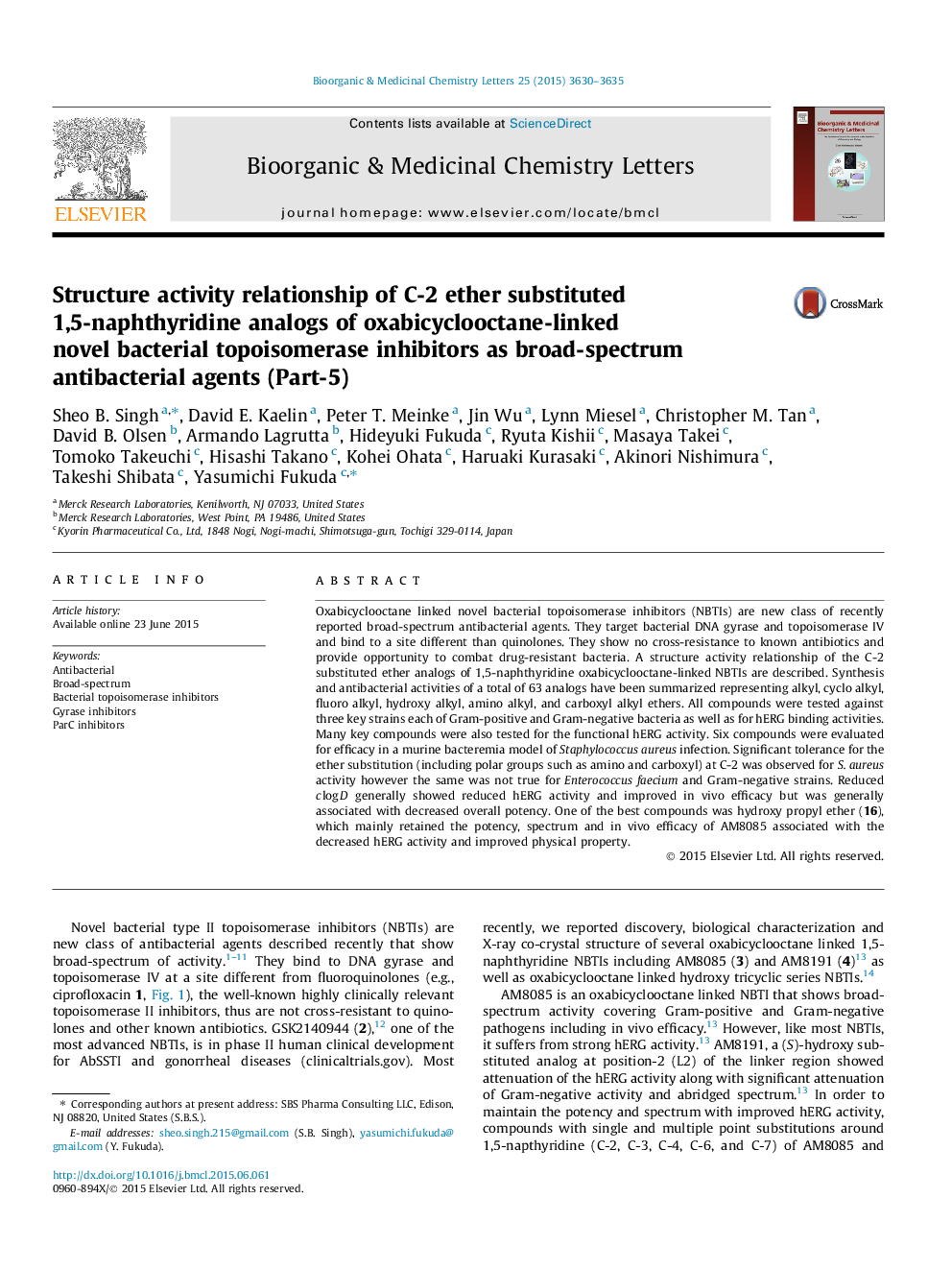| Article ID | Journal | Published Year | Pages | File Type |
|---|---|---|---|---|
| 1370548 | Bioorganic & Medicinal Chemistry Letters | 2015 | 6 Pages |
Oxabicyclooctane linked novel bacterial topoisomerase inhibitors (NBTIs) are new class of recently reported broad-spectrum antibacterial agents. They target bacterial DNA gyrase and topoisomerase IV and bind to a site different than quinolones. They show no cross-resistance to known antibiotics and provide opportunity to combat drug-resistant bacteria. A structure activity relationship of the C-2 substituted ether analogs of 1,5-naphthyridine oxabicyclooctane-linked NBTIs are described. Synthesis and antibacterial activities of a total of 63 analogs have been summarized representing alkyl, cyclo alkyl, fluoro alkyl, hydroxy alkyl, amino alkyl, and carboxyl alkyl ethers. All compounds were tested against three key strains each of Gram-positive and Gram-negative bacteria as well as for hERG binding activities. Many key compounds were also tested for the functional hERG activity. Six compounds were evaluated for efficacy in a murine bacteremia model of Staphylococcus aureus infection. Significant tolerance for the ether substitution (including polar groups such as amino and carboxyl) at C-2 was observed for S. aureus activity however the same was not true for Enterococcus faecium and Gram-negative strains. Reduced c log D generally showed reduced hERG activity and improved in vivo efficacy but was generally associated with decreased overall potency. One of the best compounds was hydroxy propyl ether (16), which mainly retained the potency, spectrum and in vivo efficacy of AM8085 associated with the decreased hERG activity and improved physical property.
Graphical abstractFigure optionsDownload full-size imageDownload as PowerPoint slide
